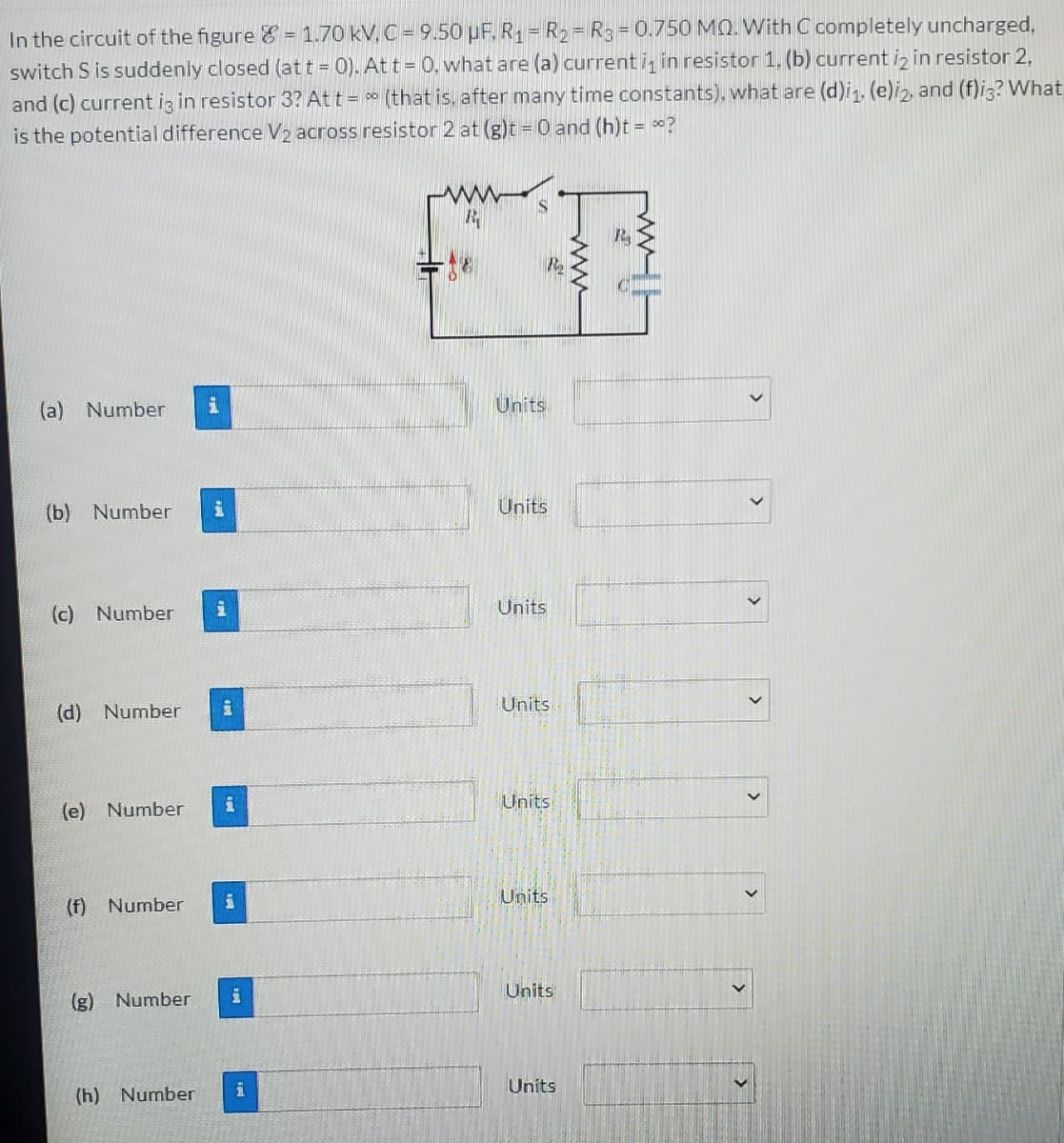In the circuit of the figure & = 1.70 kV, C = 9.50 µF. R = R2 = R3 = 0.750 MQ. With C completely uncharged, switch S is suddenly closed (at t = 0). At t = 0, what are (a) current i, in resistor 1. (b) current iz in resistor 2, and (c) current ig in resistor 3? At t = (that is, after many time constants). what are (d)iz. (e)i2, and (f)i3? What is the potential difference V2 across resistor 2 at (g)t = 0 and (h)t = ? (a) Number Units (b) Number Units (c) Number Units Units (d) Number Units (e) Number Units (f) Number Units (g) Number > >
In the circuit of the figure & = 1.70 kV, C = 9.50 µF. R = R2 = R3 = 0.750 MQ. With C completely uncharged, switch S is suddenly closed (at t = 0). At t = 0, what are (a) current i, in resistor 1. (b) current iz in resistor 2, and (c) current ig in resistor 3? At t = (that is, after many time constants). what are (d)iz. (e)i2, and (f)i3? What is the potential difference V2 across resistor 2 at (g)t = 0 and (h)t = ? (a) Number Units (b) Number Units (c) Number Units Units (d) Number Units (e) Number Units (f) Number Units (g) Number > >
Related questions
Question

Transcribed Image Text:In the circuit of the figure & = 1.70 kV, C = 9.50 µF. R = R2 = R3 = 0.750 MQ. With C completely uncharged,
switch S is suddenly closed (at t = 0). At t = 0. what are (a) current i, in resistor 1. (b) current iz in resistor 2,
and (c) current ig in resistor 3? At t = (that is, after many time constants). what are (d)in. (e)i2, and (f)i3? What
is the potential difference V2 across resistor 2 at (g)t = 0 and (h)t = ?
R
(a) Number
Units
(b) Number
Units
(c) Number
Units
Units
(d) Number
Units
(e) Number
Units
(f) Number
Units
主
(g) Number
Units
(h) Number
>
Expert Solution
This question has been solved!
Explore an expertly crafted, step-by-step solution for a thorough understanding of key concepts.
Step by step
Solved in 4 steps with 4 images
